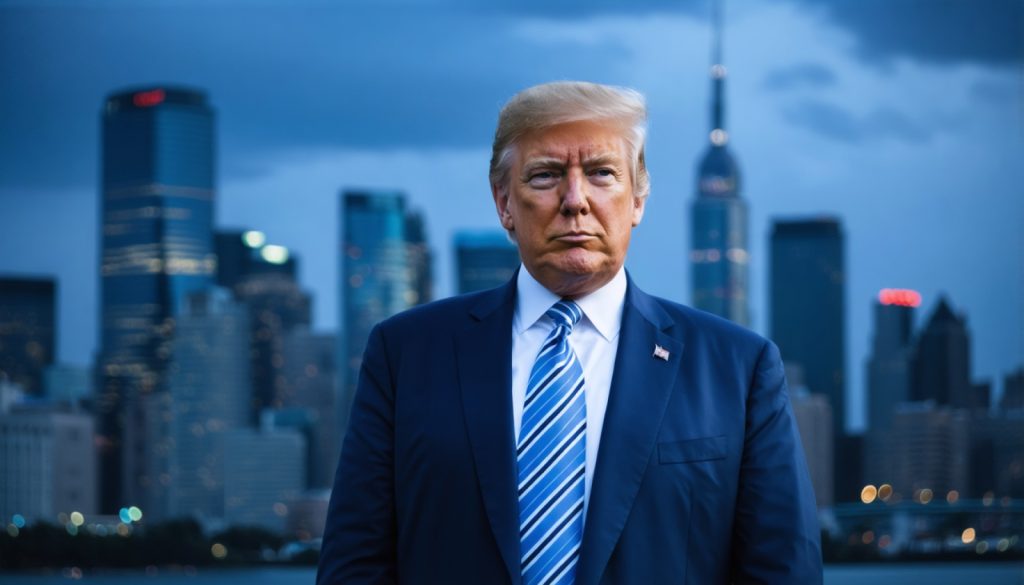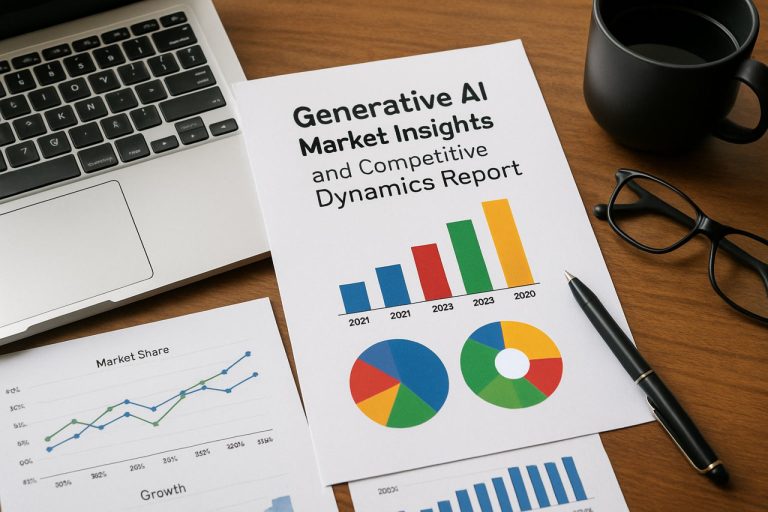
- Cryptocurrency traders on Polymarket have increased the odds of a U.S. recession by 2025 to 54%, up from 38% a week prior.
- This change follows President Trump’s “Liberation Day” tariffs, which significantly impacted financial markets.
- Prediction platforms like Polymarket and Kalshi reflect rising recession concerns, with Kalshi also observing a jump to 54% from 17% in earlier 2023.
- $1 million has been engaged in economic predictions on Polymarket, reflecting global interest in U.S. economic outcomes.
- The financial markets were affected by the broad 10% tariffs on imports effective April 5, affecting stocks but not Bitcoin.
- Economist Justin Wolfers criticized the increased recession probability as unnecessary and significant.
- The interplay of policy changes, prediction markets, and market reactions remains a focus for analysts and investors.
In the dynamic realm of economic forecasts, the landscape shifted dramatically as cryptocurrency traders cast their digital votes, bolstering odds of a U.S. recession to an eye-catching 54%. This surge unfurled across Polymarket, a bustling prediction platform thriving on the blockchain. Until recently, the idea that the U.S. might plunge into recession by 2025 was a distant specter, floating at a mere 38% likelihood just a week ago. However, the narrative twisted sharply following President Donald Trump’s delivery of the surprisingly severe “Liberation Day” tariffs—which gyrated the financial markets and captured the scrutiny of bettors keenly focused on economic indicators.
A vivid illustration of a global economy wired into the pulse of digital finance emerged as over $1 million flowed into the speculative maelstrom, each dollar a vote on the American economic future. The scenario hanging in the balance requires the National Bureau of Economic Research to affirm a recession or for U.S. GDP to stumble into two successive quarters of contraction before the dawn of 2026.
While Polymarket remains an enigma for U.S. residents, constrained by jurisdictional fences, the allure of predicting economic destiny found a parallel in the federally regulated platform, Kalshi. There, the spike mirrored the trend, with recession odds jumping from an optimistic 17% in the year’s first quarter to the now sober 54%.
The financial world shuddered under the weight of Trump’s sweeping tariffs, casting a wide 10% net over all imports starting April 5. Stocks faltered, embodying the market’s unease, while Bitcoin showcased its resilience, holding its line steadfastly through the day’s turmoil. At the heart of these tremors, JPMorgan readjusted its assessment, underscoring a 40% recession risk—a notable ascent from earlier estimates.
Adding nuance to the chorus of concern, influential economist Justin Wolfers branded the increasing probability of a 2025 recession as both significant and needless. It’s a sentiment that reflects a broader concern within the financial and academic community regarding the implications of aggressive trade maneuvers.
In this swirling economic theater, the key takeaway is the potent influence of policy shifts and their ripple effects through speculative markets. As the world watches, the dance between policy, prediction platforms, and real-world outcomes will continue to captivate, leaving analysts and investors alike pondering the line where speculation meets reality.
Why Wall Street is Holding its Breath: The Rising Recession Odds in the U.S.
Exploring the Latest Developments in Recession Predictions
In the ever-evolving landscape of global economics, recent developments have thrust the probability of a U.S. recession to new heights, as indicated by the heightened activity on platforms like Polymarket and Kalshi. As traders responded to changing tariffs and geopolitical tensions, the likelihood of a recession by 2025 surged dramatically from 38% to 54% in just a week. This rapid shift offers significant insights into the interplay of policy, prediction markets, and global economic health.
Unpacking the Factors Behind the Surge
1. Impact of Trump’s Tariffs:
The recent tariffs introduced by former President Donald Trump, referred to as “Liberation Day” tariffs, have imposed a 10% levy on all imports. This sweeping policy has sent shockwaves through global supply chains, affecting import-dependent industries and resulting in increased costs for American consumers and businesses.
2. Economic Predictions and Platforms:
Polymarket and Kalshi, though different in regulatory compliance—Polymarket being blockchain-based and restricted for U.S. residents, and Kalshi being federally regulated—serve as barometers for economic sentiment. These platforms allow traders to speculate on future events, including economic contractions, by placing bets with real money, thus indicating collective trader sentiment.
3. JPMorgan’s Reassessment:
In response to these developments, JPMorgan has raised its recession risk estimate to 40%, marking a significant departure from previous forecasts. This represents a growing consensus that external economic shocks, like increased tariffs, could disrupt U.S. economic stability.
Real-World Use Cases and Market Implications
Financial Risk Management:
The rise in recession probability highlights the importance of risk management strategies for investors and businesses. Diversifying portfolios, considering defensive asset classes, and reassessing credit risk are critical strategies in turbulent times.
Cryptocurrency as a Safe Haven:
Bitcoin’s stability amidst the turmoil suggests that cryptocurrencies may serve as a potential hedge against macroeconomic uncertainties. This aligns with the broader trend of increasing institutional investment in digital currencies.
Industry Trends and Predictions
Economic Volatility:
Experts anticipate continued volatility in the coming months as markets adjust to the interplay of tariffs, supply chain disruptions, and policy decisions. This volatility presents both risks and opportunities for savvy investors.
Evolving Policy Implications:
As global economic dynamics evolve, traders and economists are closely watching U.S. policy decisions, which could alter trade relationships and influence global economic patterns.
Recommendations and Quick Tips
1. Stay Informed: Regularly monitor economic indicators, policy changes, and market trends to make informed financial decisions.
2. Diversify Investments: Consider a mix of assets, including commodities, stocks, bonds, and cryptocurrencies, to mitigate risks.
3. Consult Experts: Work with financial advisors to tailor strategies that align with changing economic conditions.
4. Embrace Flexibility: Maintain flexibility in business operations and supply chain management to adapt swiftly to market changes.
For more insights into global economic trends, you can explore Bloomberg and Financial Times for expert analyses and updates.
By understanding these dynamics and leveraging them effectively, individuals and businesses can better navigate the complexities of today’s global economy and position themselves for future opportunities.



